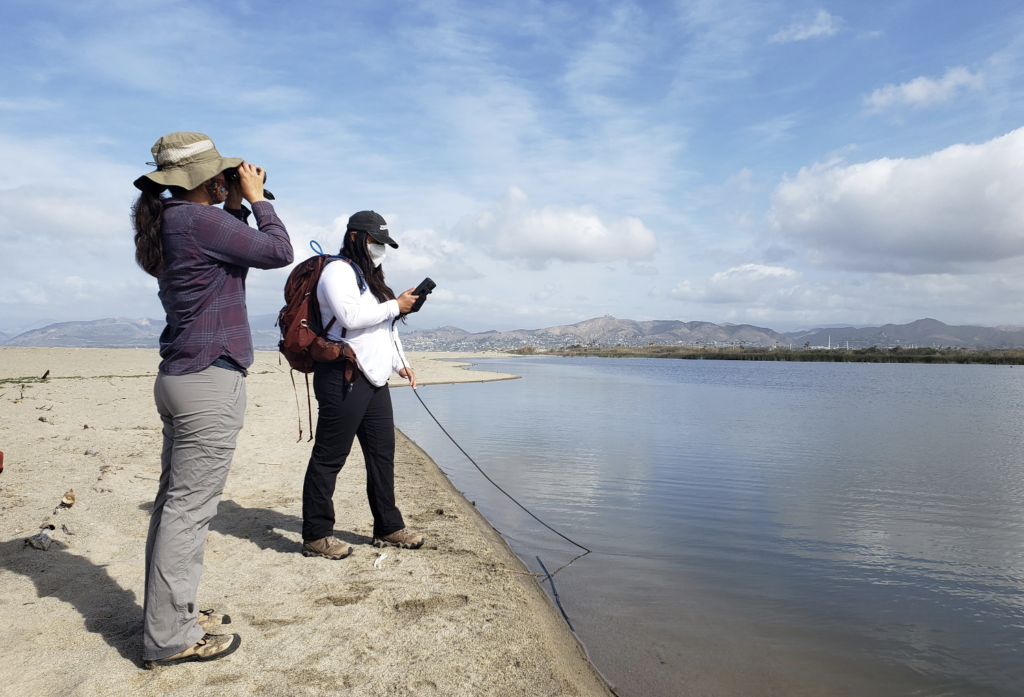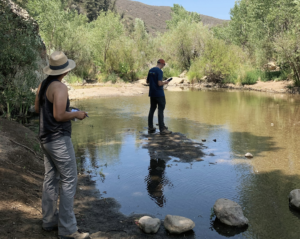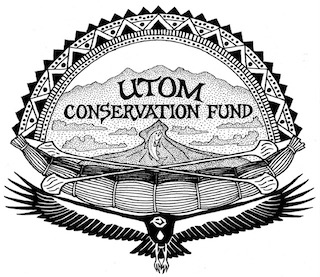Overview
The Utom Watershed encompasses a wide variation of ecosystems, habitats and elevations; from Southern California sandy beach, brackish estuary, coastal sage scrub, chaparral, high desert, and mixed conifer forest in the highest elevations. Utom is the longest, relatively undisturbed and free-flowing river in southern California and is home to bountiful natural cultural resources, traditional gathering sites, critical wildlife corridors, habitat, and biodiversity hotspots in southern California. The varied landscapes and ecosystems of the Utom watershed provide habitat for diverse aquatic and terrestrial flora and fauna.
Core Challenges

Utom has undergone significant changes since the European colonization of southern California brought agriculture, ranching, and urbanization to the region. The flood plain and reaches of the lower Utom are now confined by flood control structures and development and no longer experience historical geomorphic processes. Diversions and dams throughout the watershed have fragmented habitat and impaired migratory fish passage. Anthropogenic changes to the natural hydrology of Utom and the overdrafting of groundwater basins have removed habitat necessary for the survival of threatened species. Introduced plant species, like giant reed (Arundo donax), use up large quantities of water and choke out native stands of riparian scrub. Introduced species like western mosquitofish, green sunfish, African clawed frog, carp, and American bullfrog compete with and prey upon native species. Agricultural, industrial, and urban storm water pollution threaten cultural resources, recreational use, and habitats of Utom and its tributaries and cause cyclical patterns of eutrophication in the estuary.
Watershed Monitoring Program
The Wishtoyo Foundation runs a long-term watershed monitoring program in order to assess water quality and threats to sensitive species habitats throughout the Utom Watershed. Wishtoyo’s Stream Team monitors locations in the Santa Clara River Estuary, the mainstem of the river from the Estuary to Soledad Canyon, Sespe Creek, Santa Paula Creek, and Piru Creek.
The watershed monitoring program allows the Wishtoyo Foundation to identify threats to the watershed in real time and determine solutions and actions to address these issues. With this program, Wishtoyo is able to continuously monitor locations of concern or locations where persistent water quality issues are observed. This data assists with identifying causes of habitat degradation and cyclical patterns. The compilation of this dataset can also be useful for understanding impacts of potential future natural disasters like floods or wildfires.

Wishtoyo’s Stream Team surveys habitats and populations of cultural keystone species from the estuary, to the headwaters, and the tributaries that feed Utom. Cultural keystone species are integral plants and animals that are not only vital pieces of the ecosystem, but also play important roles in ceremonies, medicines, foods and the heartbeat of the communities that have called Utom home for thousands of years. Some of these cultural keystone species include the southern steelhead trout, western pond turtle, California Condor, arroyo, red, and narrow-leaf willows, Freemont cottonwood, and the coastal sage scrub plant communities that are endemic to this region of California.
Wishtoyo’s watershed monitoring program is much more than a scientific long-term monitoring program in the Utom Watershed. This program is an essential piece of Wishtoyo’s mission as a “rainbow bridge”, linking traditional ecological knowledge with scientific methodology to better understand and protect the natural cultural resources, cultural keystone species, and Chumash lifeways of the Utom watershed.
Utom’s Future
Despite its challenges, the Utom watershed hosts some of southern California’s most pristine freshwater environments, healthy stands of cottonwood forests, riparian woodland and coastal sage scrub, and incredible diversity of plants and wildlife. Many cultural keystone species thrive throughout the watershed, along with healthy gathering sites where traditional tending practices continue in perpetuity.
Despite its challenges, the Utom watershed hosts some of southern California’s most pristine freshwater environments, healthy stands of cottonwood forests, riparian woodland and coastal sage scrub, and incredible diversity of plants and wildlife. Many cultural keystone species thrive throughout the watershed, along with healthy gathering sites where traditional tending practices continue in perpetuity.
Although Utom faces a multitude of issues and threats, opportunities and hope for restoration exist throughout the watershed and many projects are underway. Utom may never be able to be restored to historical conditions; but efforts to redesign fish passage structures, remove manmade lakes, set back flood control structures, remove invasive vegetation, restore riparian vegetation communities, and reduce polluted discharge can restore natural processes to Utom and allow the watershed to better support the plants, people, and wildlife that depend on it.
Although Utom faces a multitude of issues and threats, opportunities and hope for restoration exist throughout the watershed and many projects are underway. Utom may never be able to be restored to historical conditions; but efforts to redesign fish passage structures, remove manmade lakes, set back flood control structures, remove invasive vegetation, restore riparian vegetation communities, and reduce polluted discharge can restore natural processes to Utom and allow the watershed to better support the plants, people, and wildlife that depend on it.
